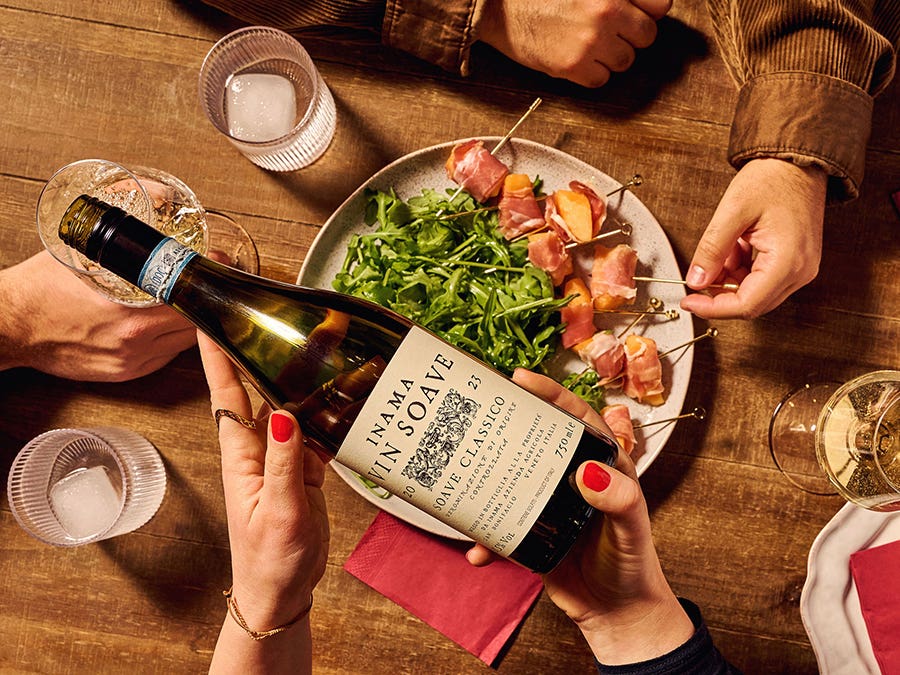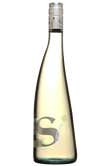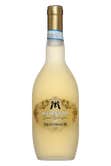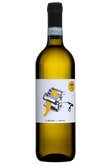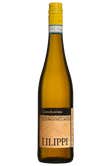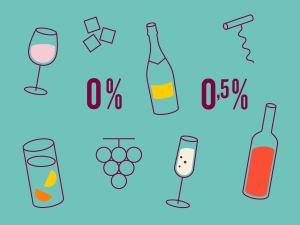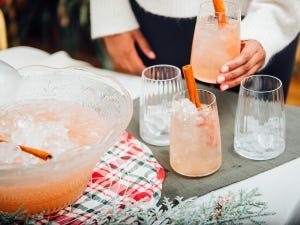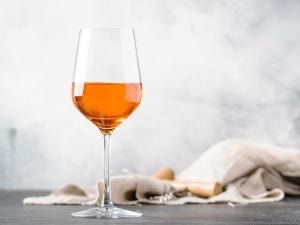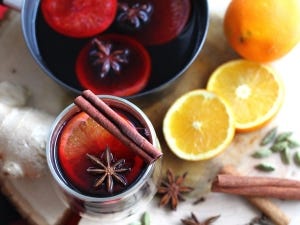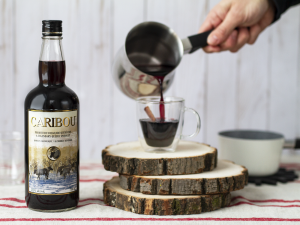Vibrant whites
Produced in the Veneto region of Italy, Soave is a controlled designation of origin (DOC) white wine that stands out thanks to a rich aromatic profile. Garganega—a grape native to the area—must constitute at least 70% of the wine, and the remainder may be composed of other varietals like Trebbiano di Soave, Pinot Bianco and Chardonnay.
While the name implies genteel elegance, Soaves actually taste bright and complex. The category includes a wide range of flavour profiles. When young, these whites are bursting with freshness, lightness and fruity notes—qualities that are usually preserved because the wine is fermented in stainless steel tanks. When aged, they become richer and more structured, developing nutty notes. These characteristics sometimes develop even further when the wine is matured in wooden barrels for several months.
One thing all Soaves share is a slightly bitter almond finish, as well as a balanced profile that’s a study in contrasts—like a sweet silkiness countered by a crisp, lively finish.
A multitude of flavours in a single terroir
Aside from the aging process, the diverse terroir has much to do with how these white wines turn out, as they do vary from one vineyard to another. That’s because the Soave region in Veneto is a veritable mosaic of microterroirs, with limestone hills standing beside basalt-rich volcanic soil and layers of marine deposits full of clay. As a result, wine from a basaltic terroir will have more minerality and acidity, while another from an area with more limestone will present notes of white flowers, apricot and citrus. Soave Classico DOC, the heart of the region, is shaped by ancient volcanic soil strewn with black basalt rocks, tufa stone and veins of chalk, producing wines that are more mineral-forward.


In addition to the geography, the mild Mediterranean climate—ideal for cultivating Garganega, a late-ripening grape that develops complex and intense aromas of tropical fruit—yields wines that are perfect for aging. This varietal has a thicker skin, which makes it better able to withstand the misty periods that are common in the region.
The fruit of ancient know-how
Soave is the result of a strong cultural and viticultural tradition that took root during the Roman period. Not only has Garganega been cultivated in the area for over 1,000 years, but the modern production processes date back to 1968, which was when the Soave DOC was created.
Nowadays, despite the implementation of innovative techniques, the artisanal spirit continues to thrive, as evidenced by the passionate winemakers who pass down knowledge specific to their unique parcel of land to the next generation. For the last few decades, they’ve also put aside selling their grapes in favour of making wine on site. And smaller vineyards are everywhere, with the Soave DOC’s criteria dictating that to qualify, the wine must be made from grapes harvested on land no larger than about 35 acres. This intimate connection between the artisans and their historical terroir translates to top-shelf whites with a distinctive character.
Pairings that elevate Soave


The delicate flavours of a Soave truly shine when served between 10 and 12 °C. It would be a great complement to linguine with grilled lemon shrimp, pea risotto, lemon butter scallops, or fettuccine carbonara.
To discover
See all the Soave DOC wines
In partnership with Soave DOC


-
Inspiration
(810)
- Profiles (201)
- Interviews (85)
- Share (325)
- Trends (67)
- Tasting and service (51)
- Production methods (21)
- Conservation (5)
- Wine cultivation (27)
- Pairings and Taste Tags (26)
- The SAQ is here (53)
-
About us
(73)
- Press releases (60)
- Career (5)
- Clarifications (8)
- Sustainable development (21)
 Access to SAQ Inspire personalized services and store inventories are unavailable at the moment.
Access to SAQ Inspire personalized services and store inventories are unavailable at the moment. Free in-store delivery with purchases of $75+ in an estimated 3 to 5 business days.
Free in-store delivery with purchases of $75+ in an estimated 3 to 5 business days. 
